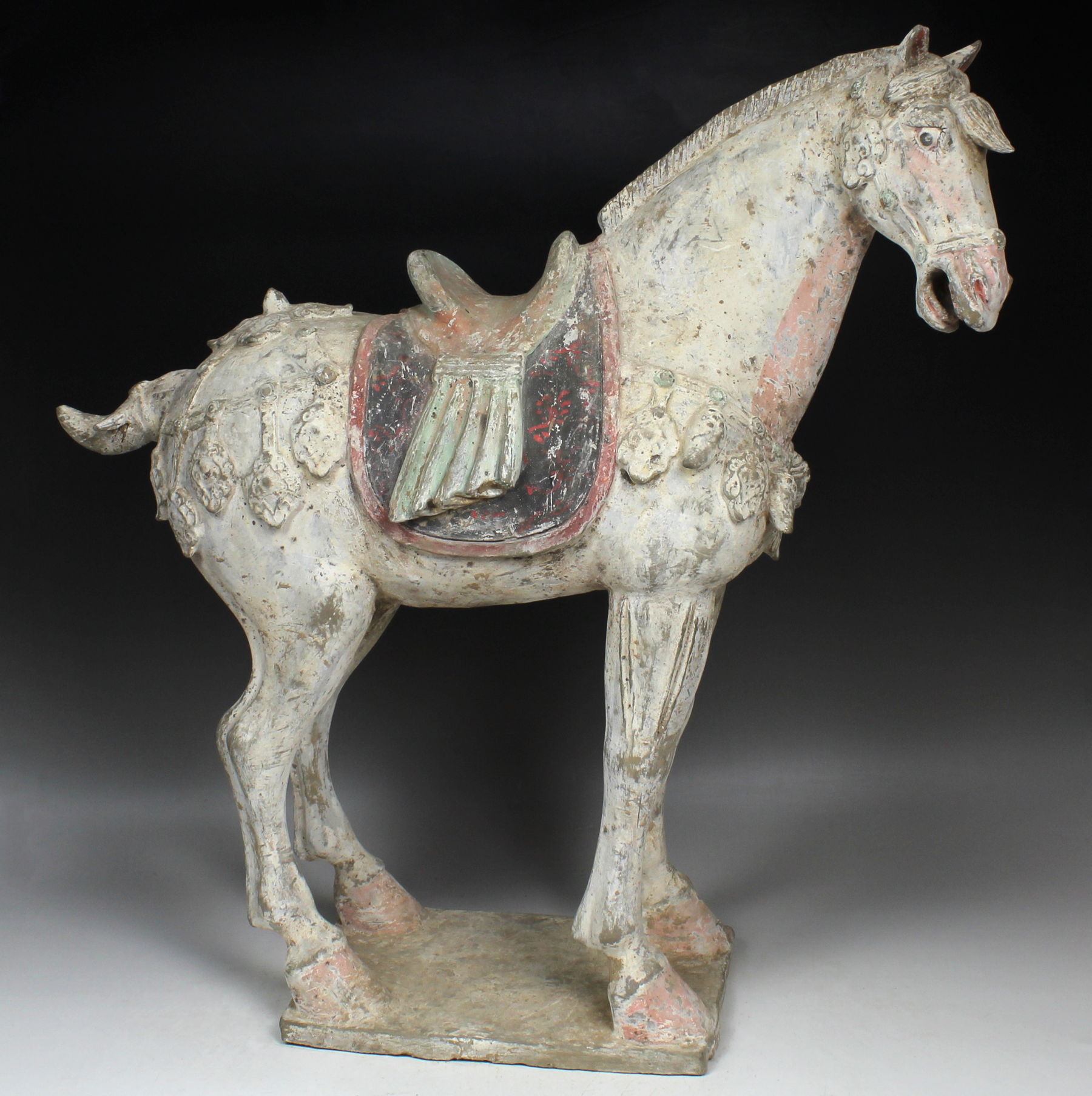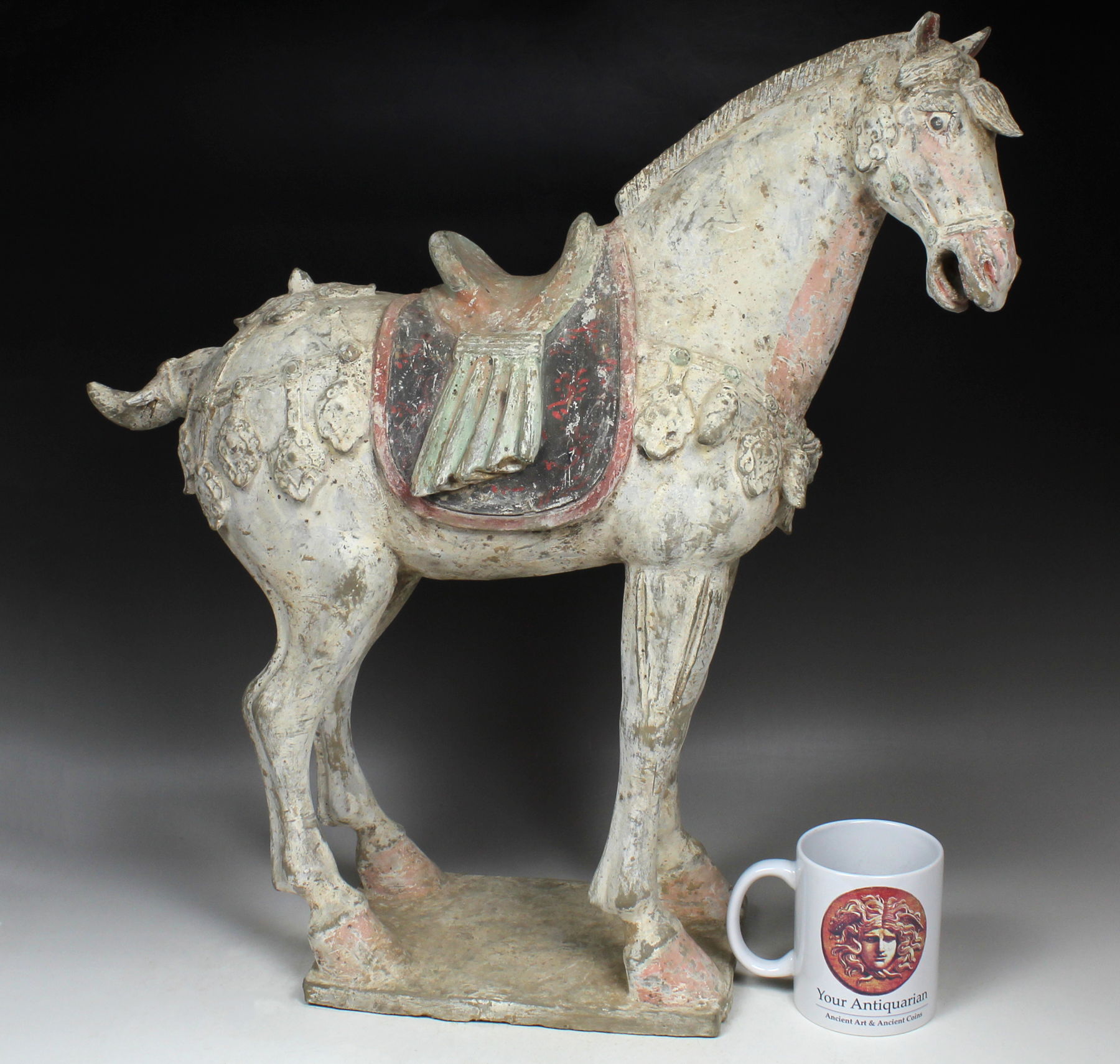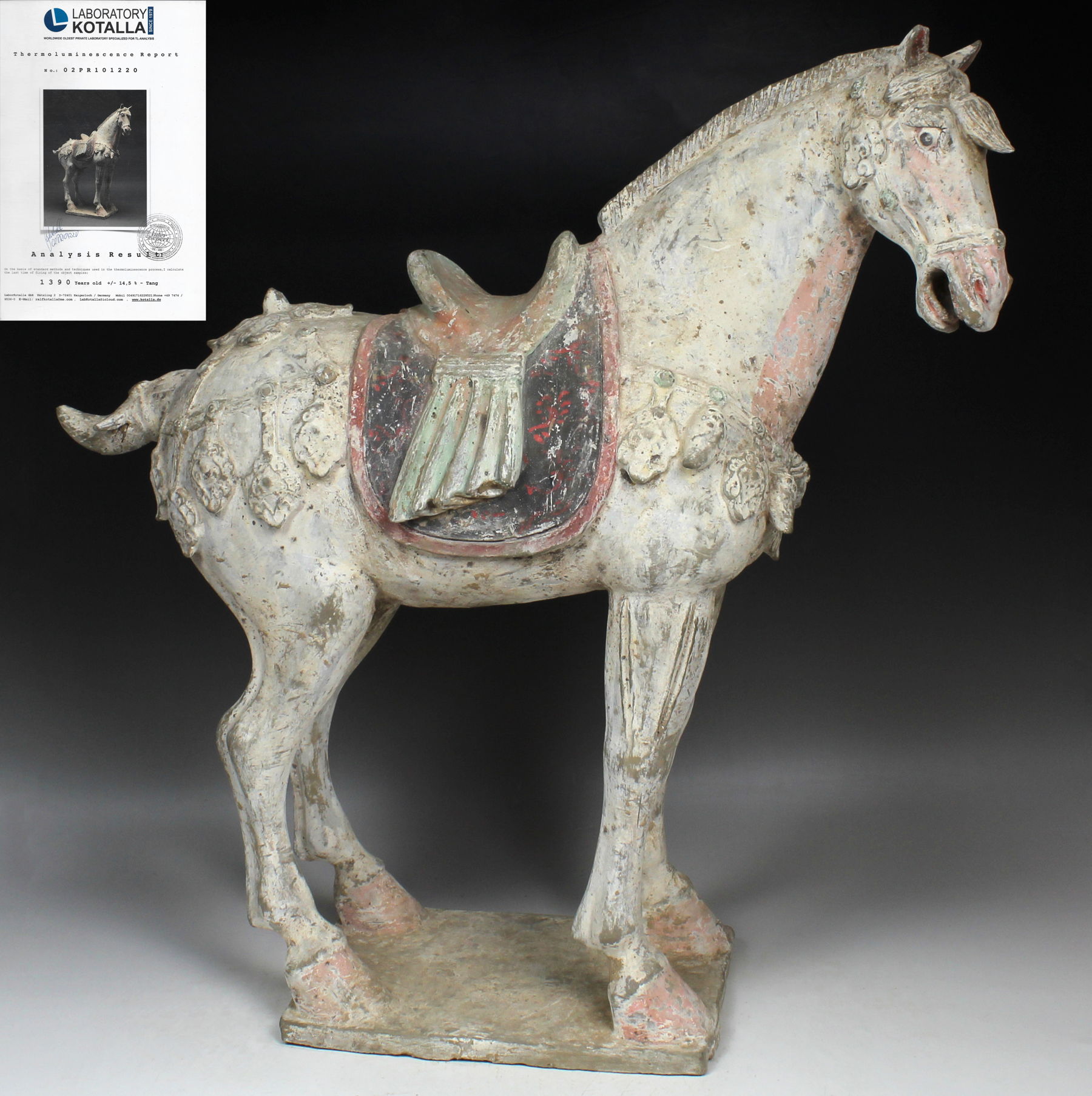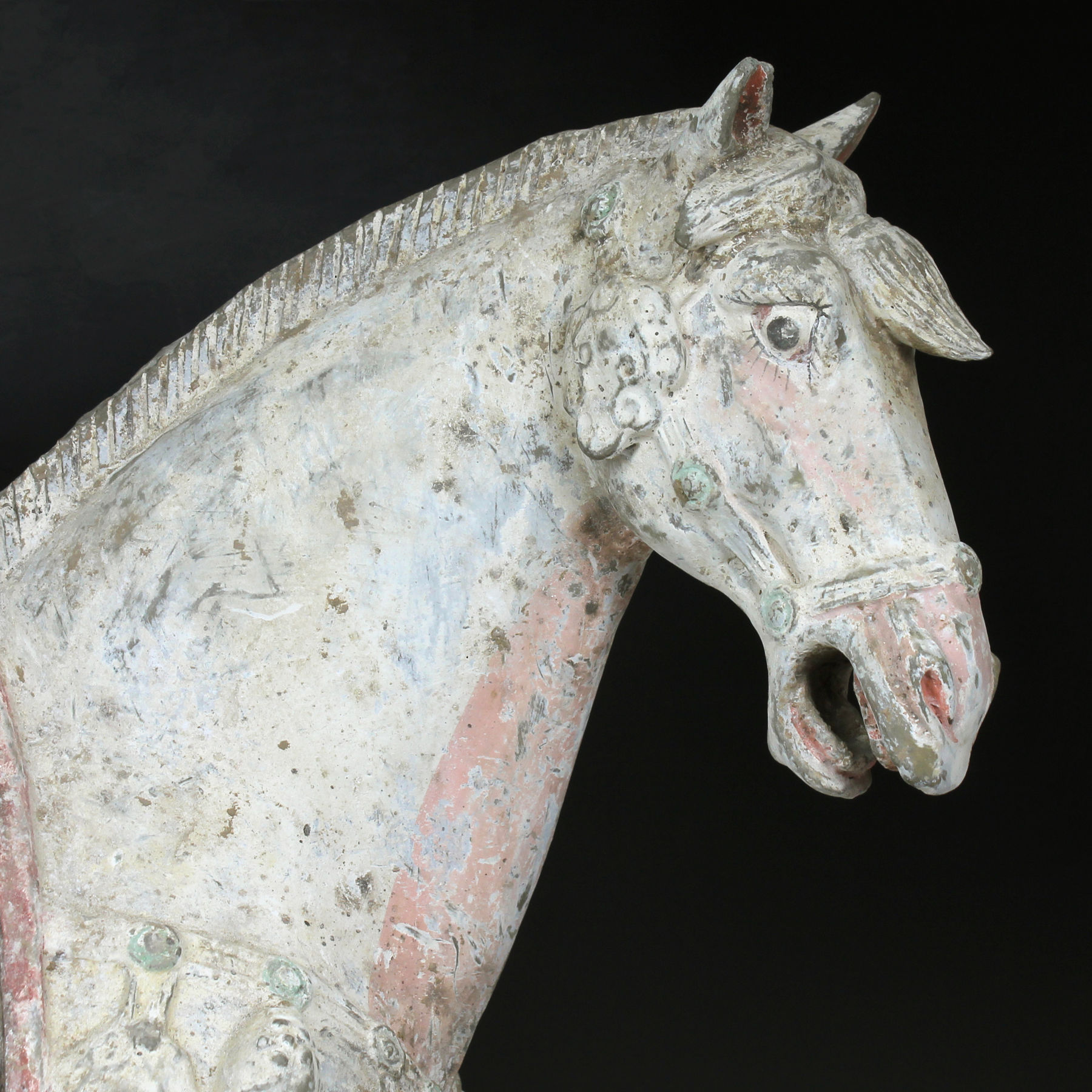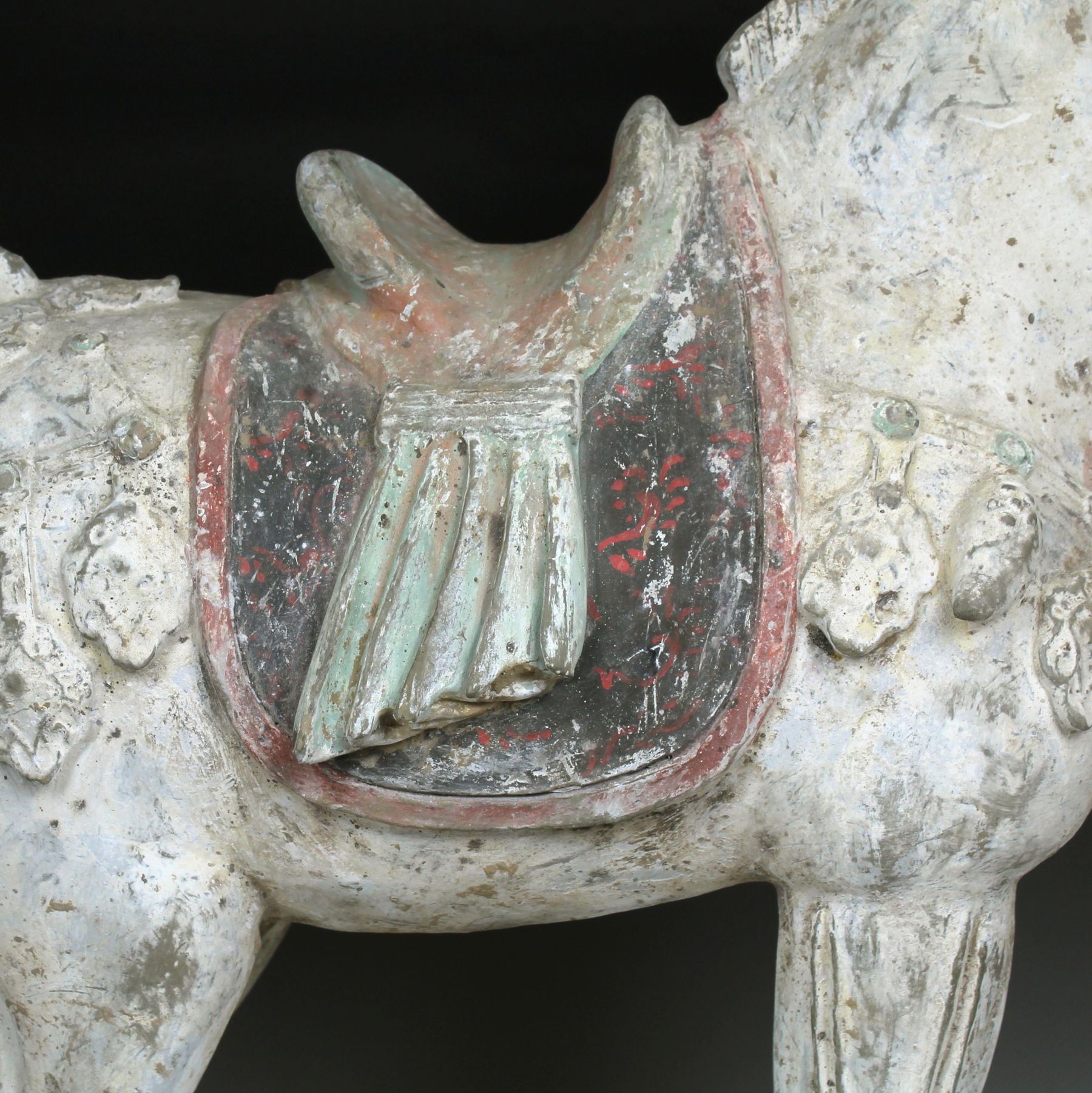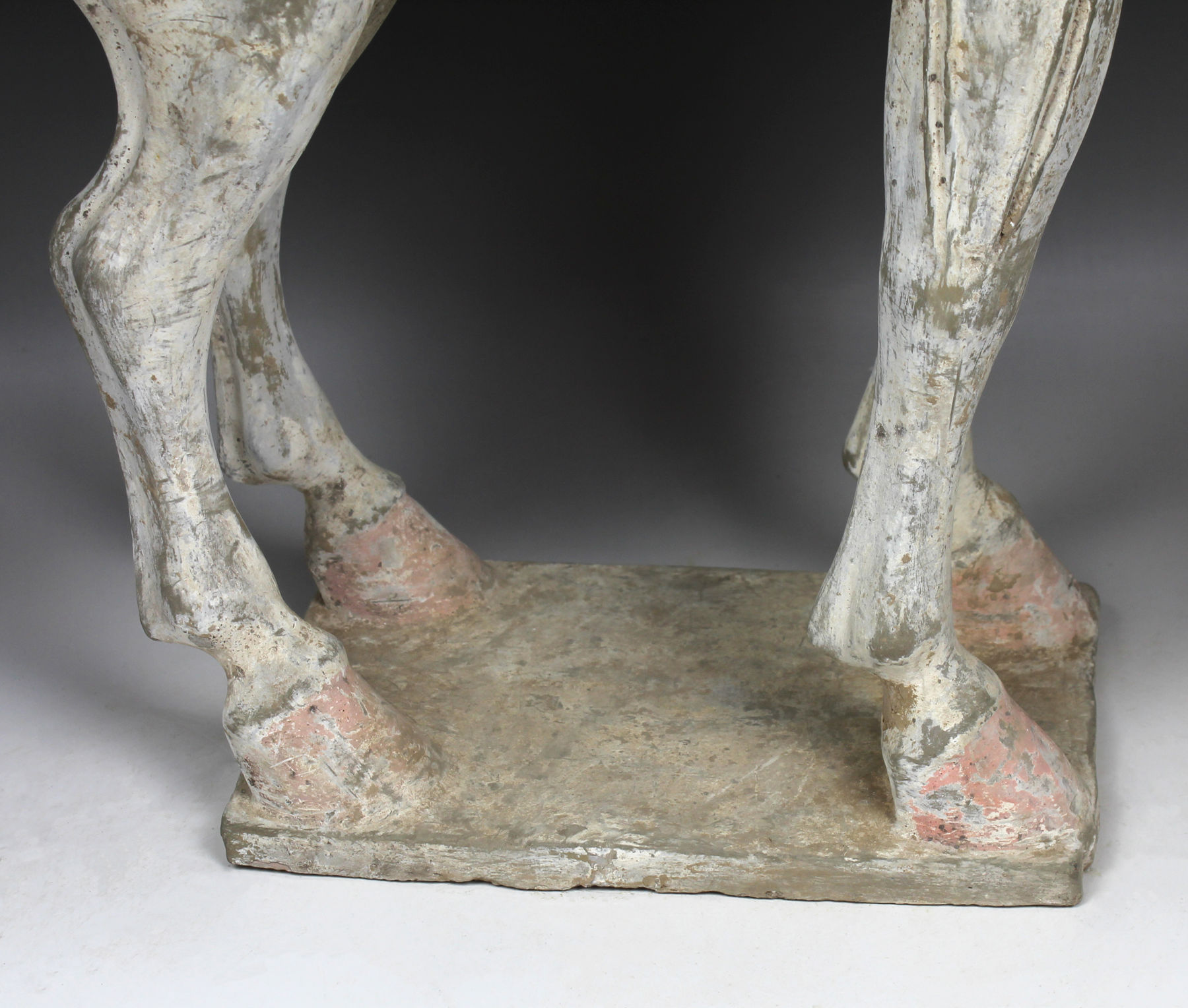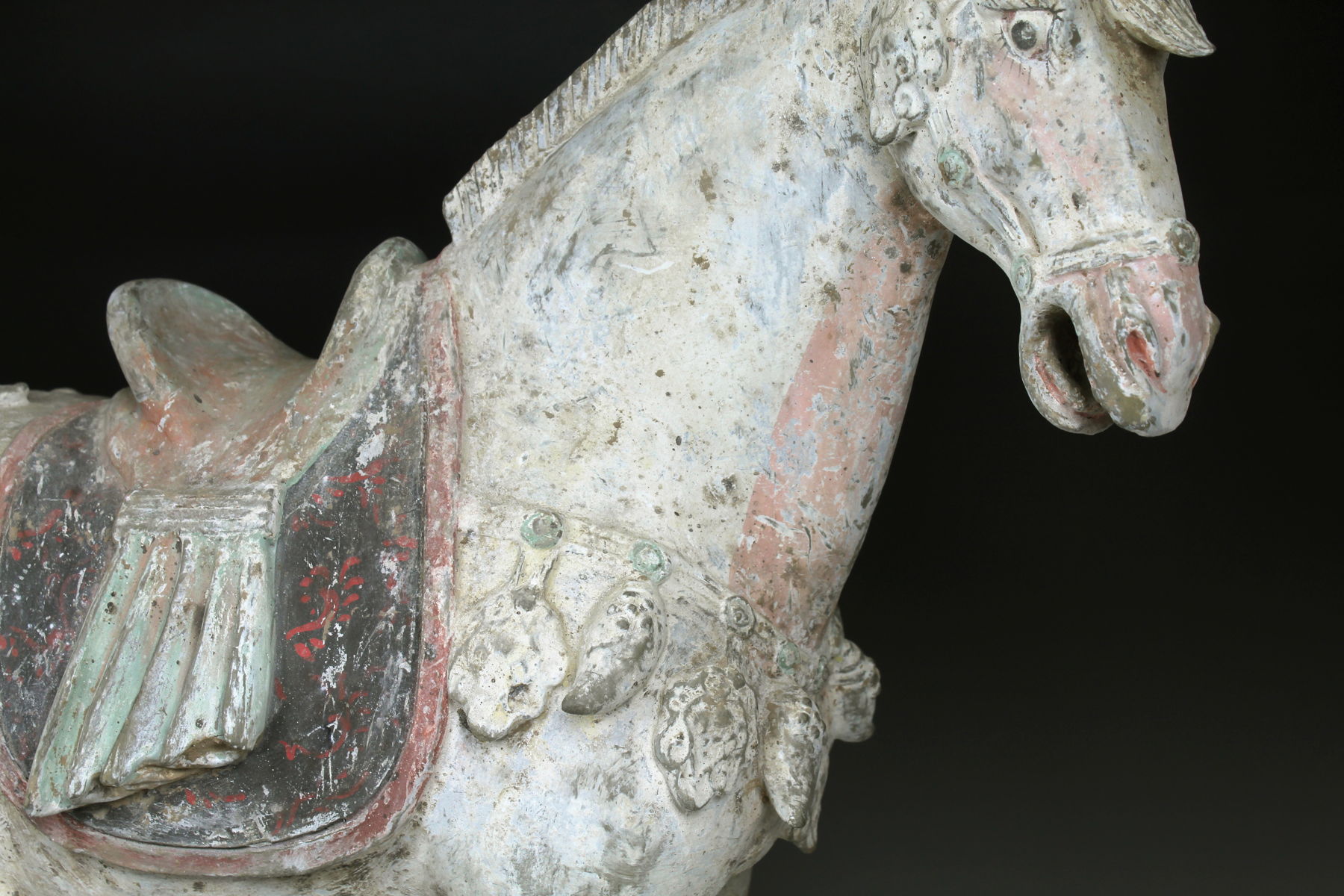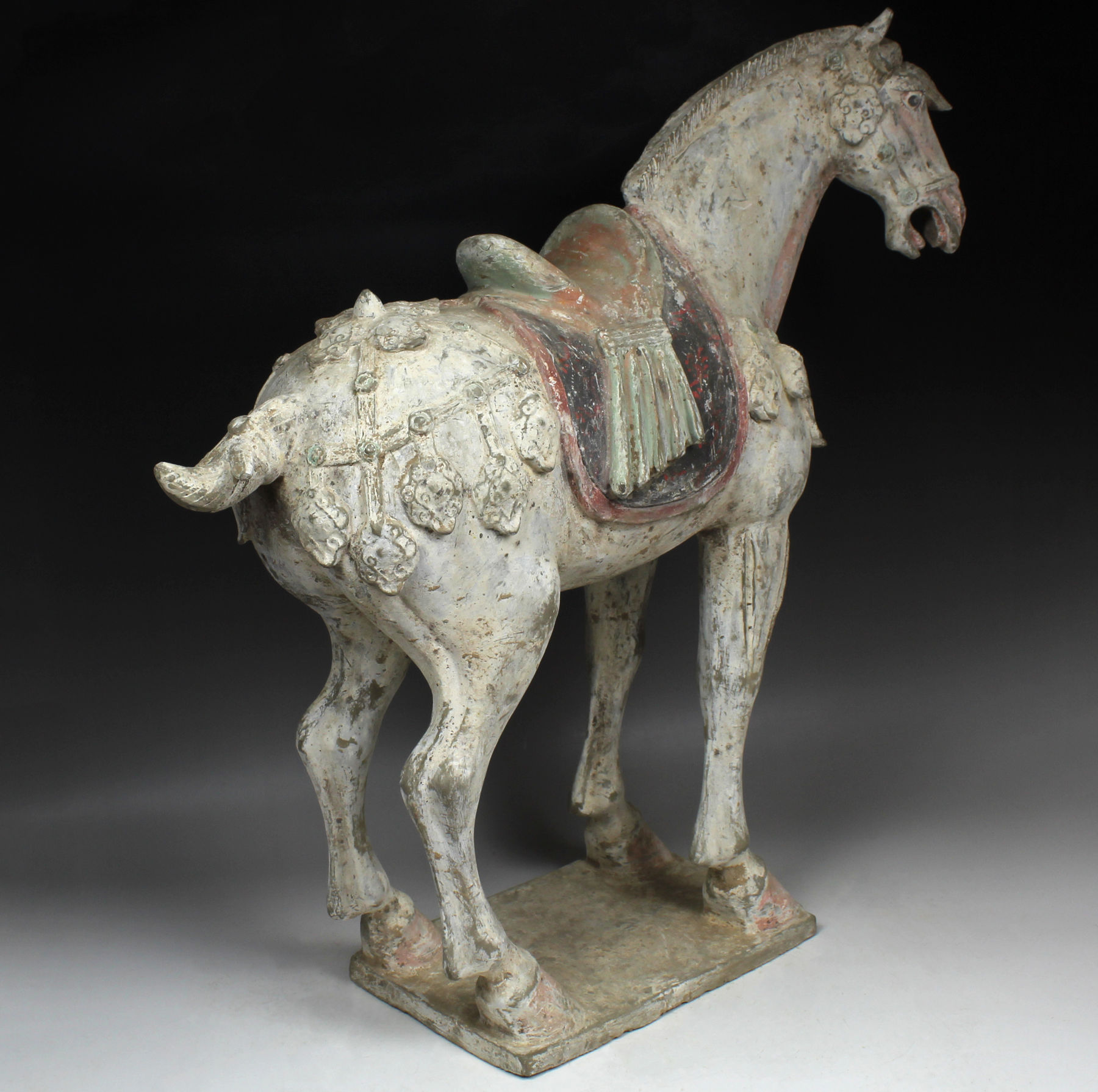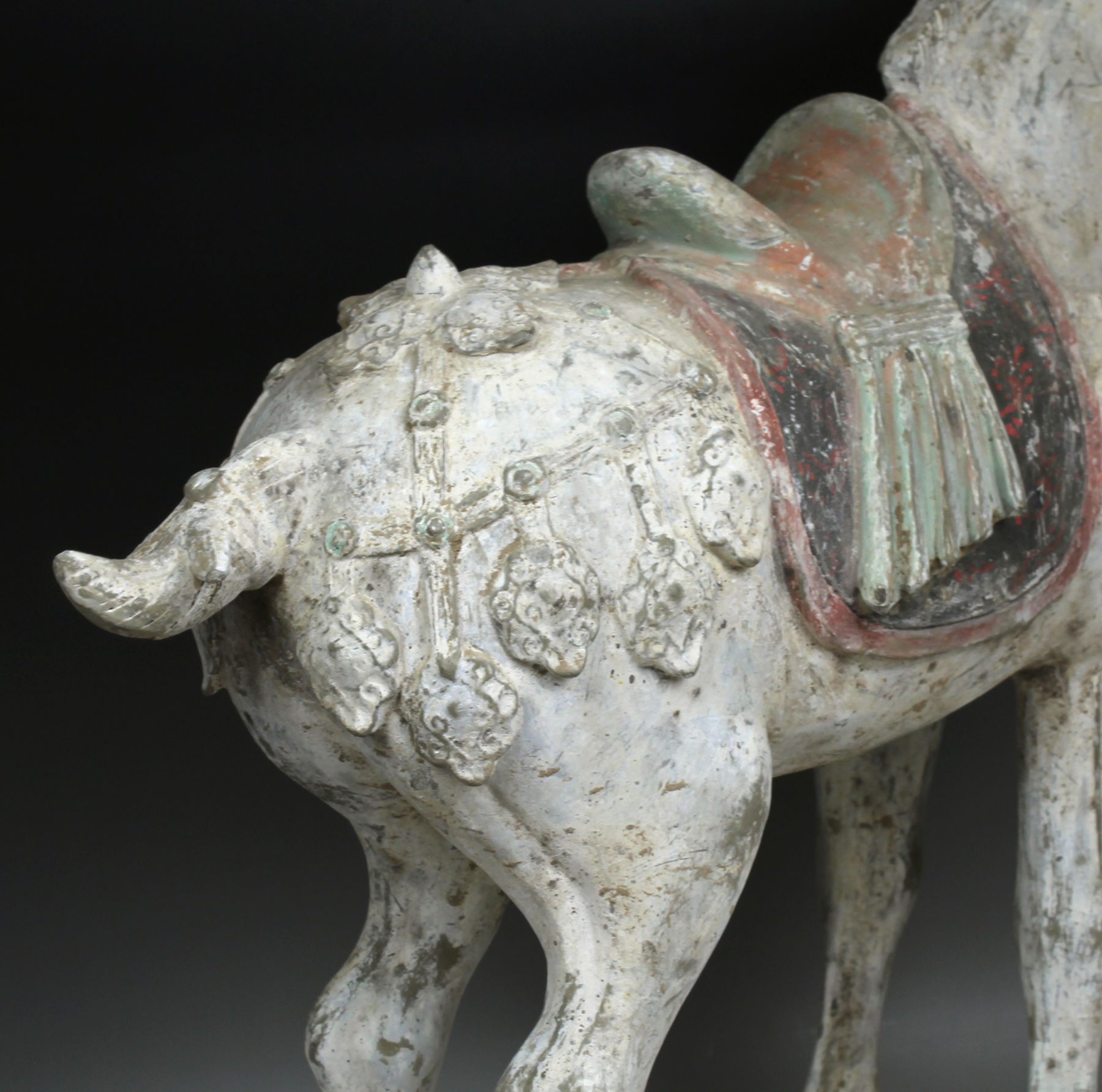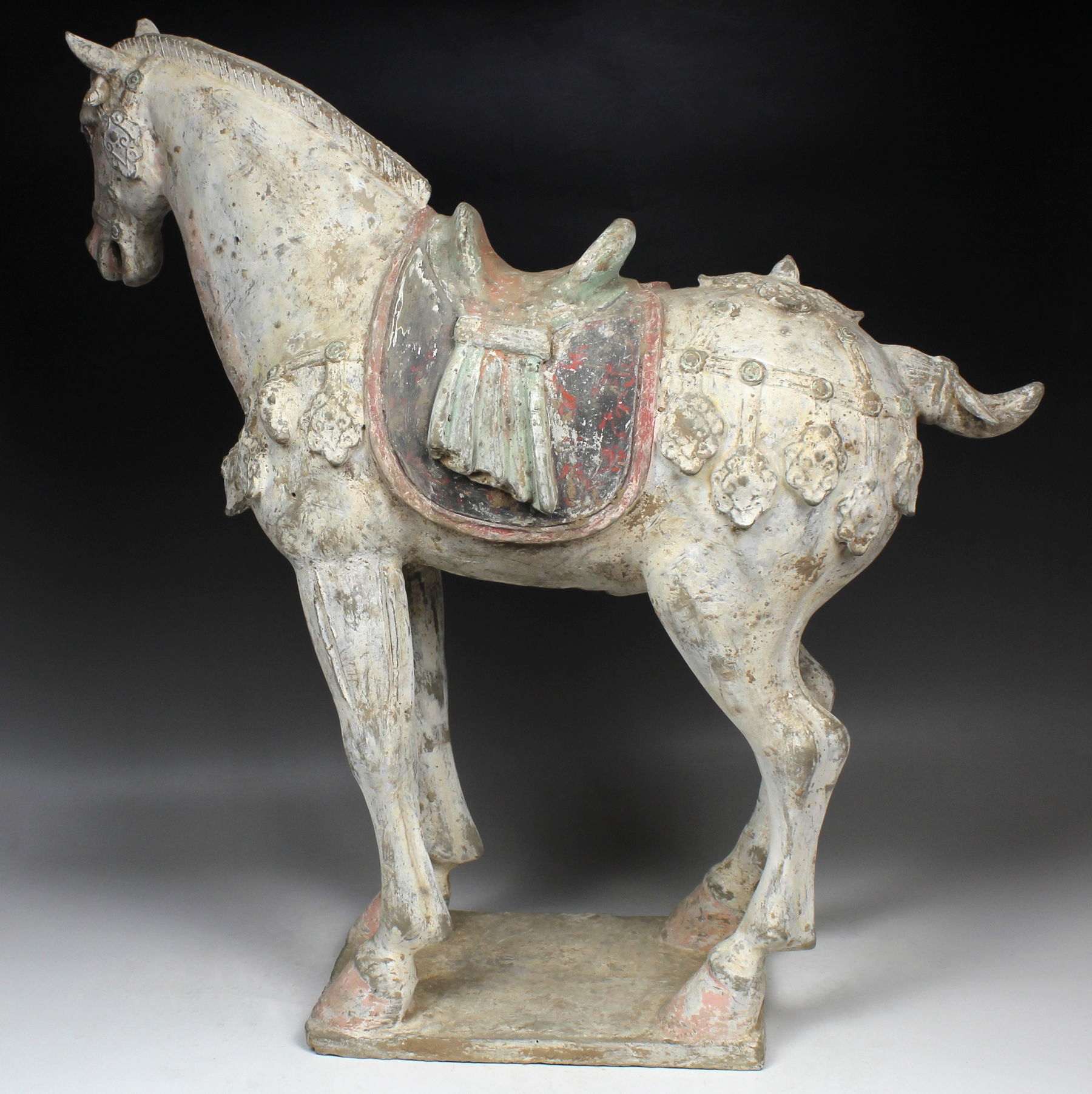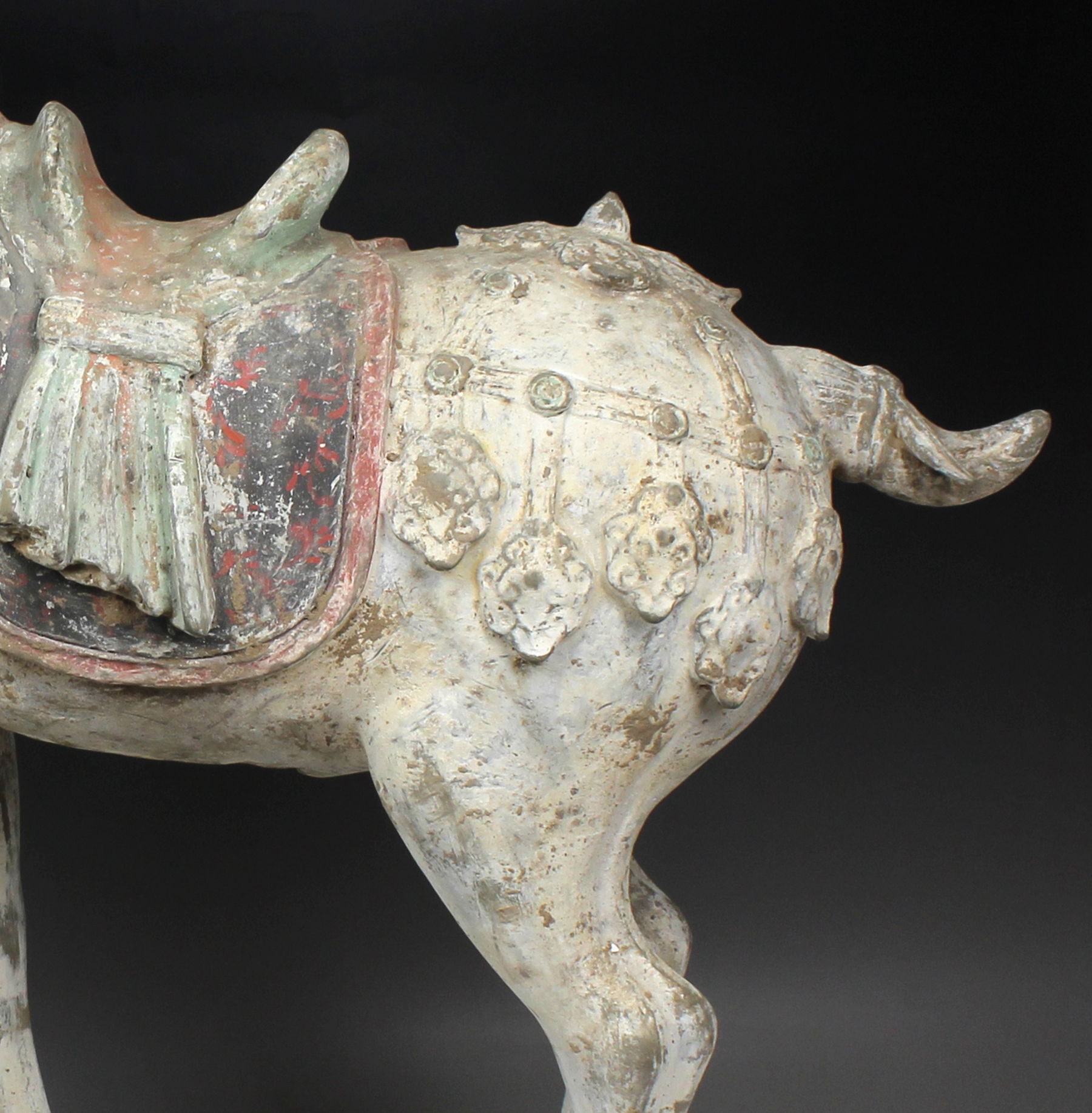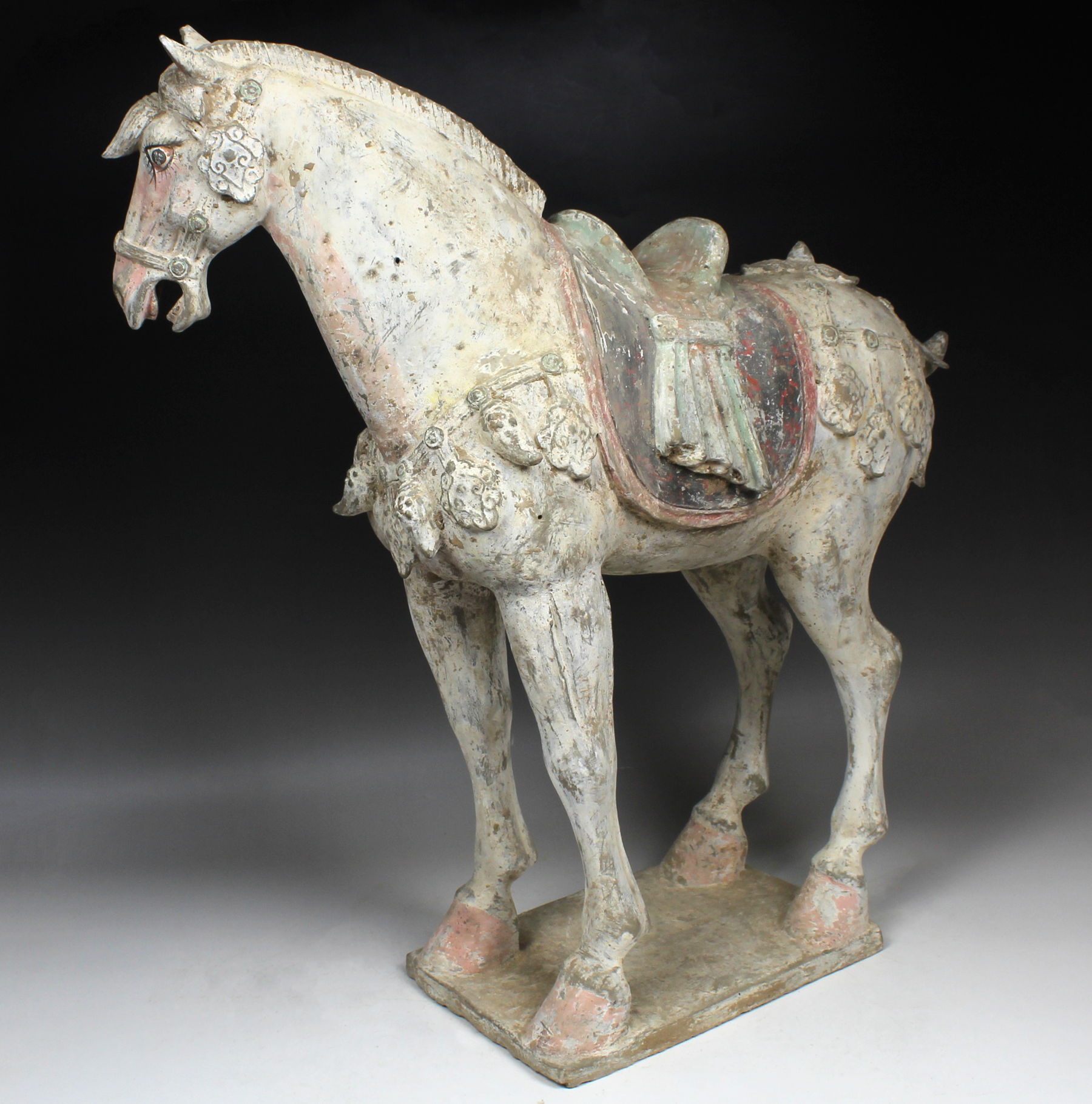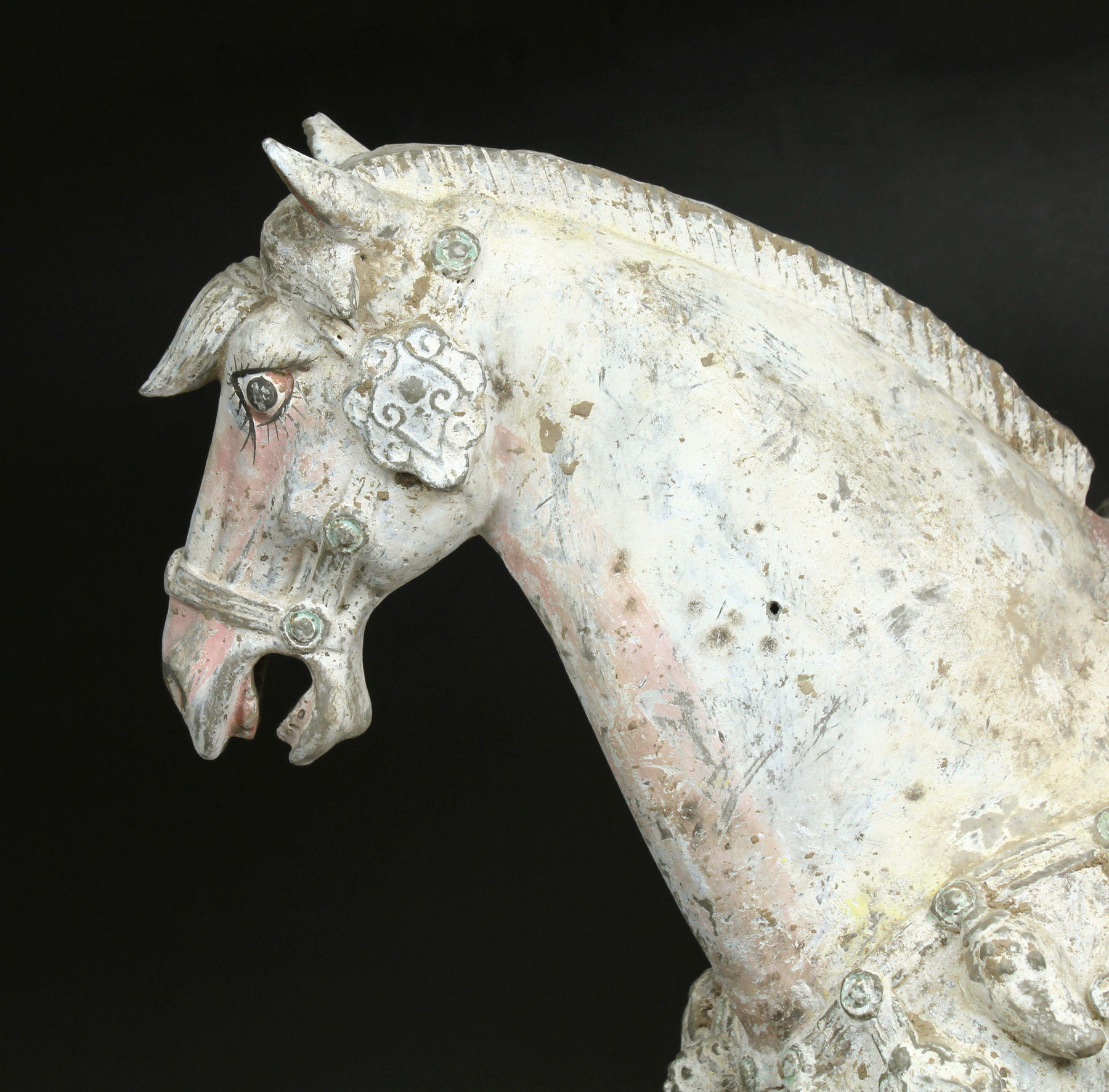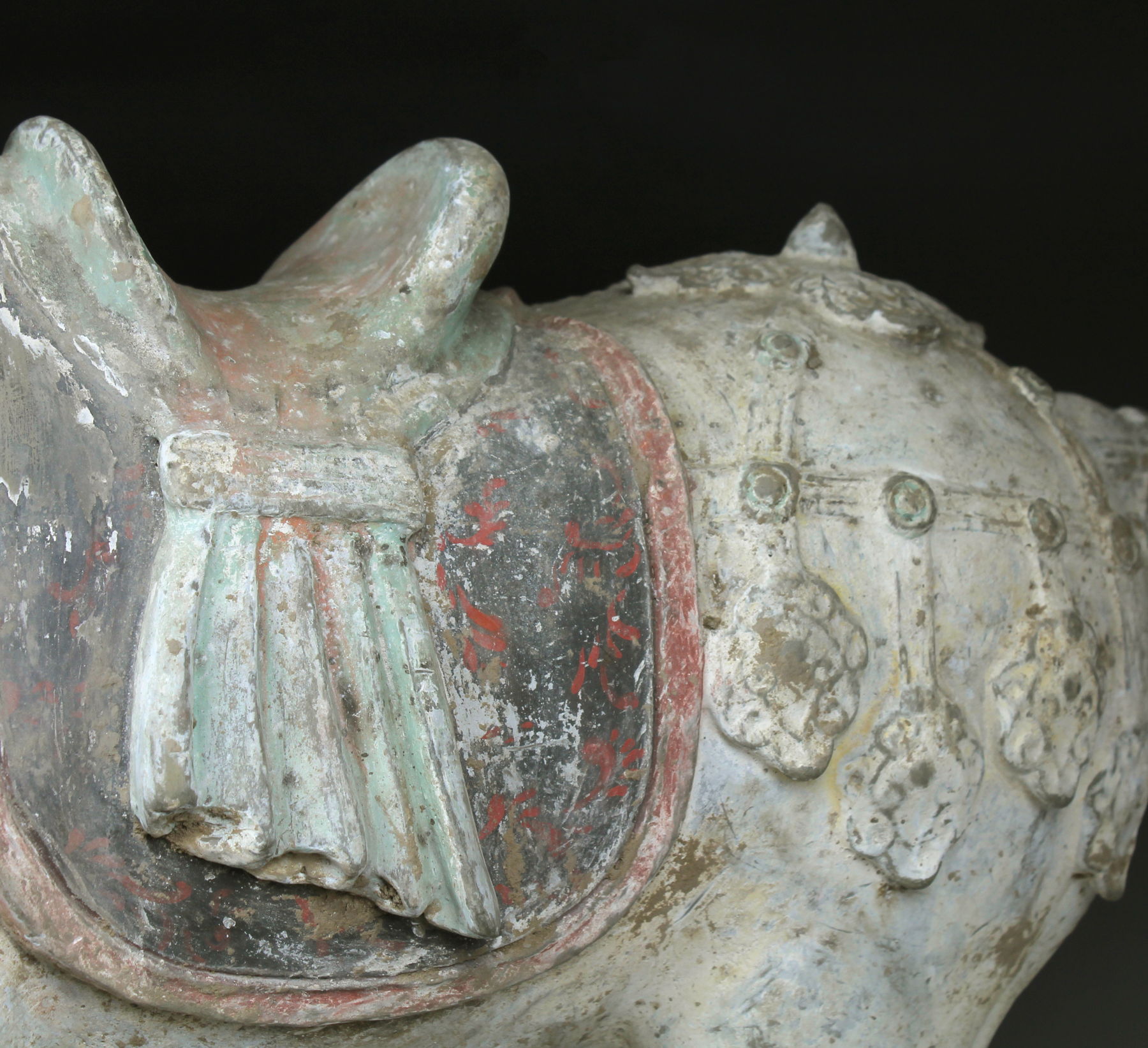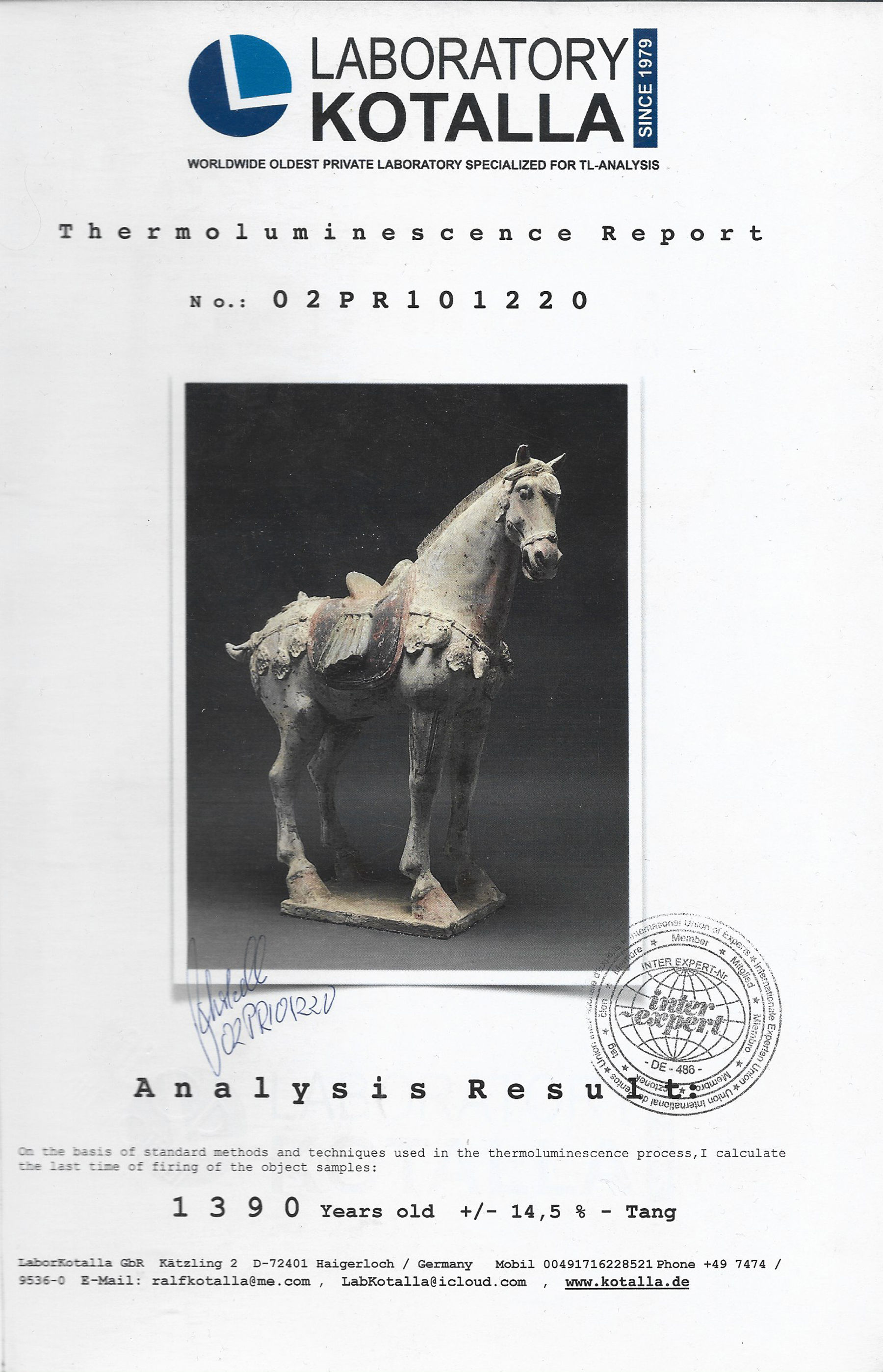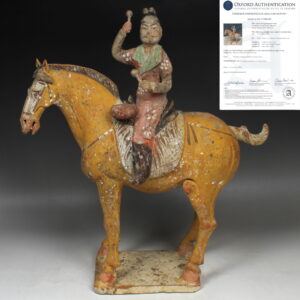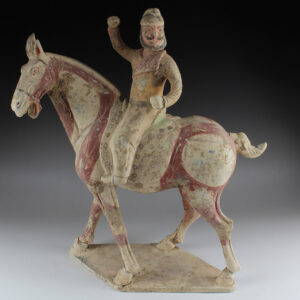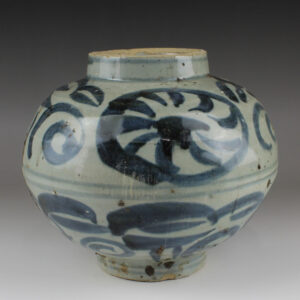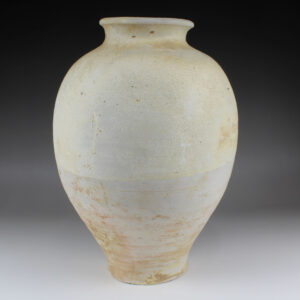Description
| ITEM | Statuette of a horse |
| MATERIAL | Pottery |
| CULTURE | Chinese, Tang Dynasty |
| PERIOD | 618 – 907 A.D |
| DIMENSIONS | 560 mm x 530 mm x 200 mm |
| CONDITION | Good condition. Includes Thermoluminescence test by Laboratory Kotalla (Reference 02PR101220) |
| PROVENANCE | Ex Belgian private collection (2022), Ex English art gallery, Ex English private collection, D.R, acquired in 1990s |
The Tang Dynasty, which ruled China from 618 to 907 AD, is often regarded as one of the most glorious periods in Chinese history, characterized by political stability, economic prosperity, and remarkable cultural achievements. Established by the Li family, the dynasty saw significant advancements in various fields, including poetry, painting, calligraphy, and technology. The Tang Dynasty was renowned for its cosmopolitanism, with influences from Central Asia, India, and the Middle East contributing to its vibrant cultural landscape. Under Tang rule, China experienced a golden age of literature and art, with figures like Li Bai and Du Fu flourishing in poetry and artists such as Wu Daozi making significant contributions to painting.
During the Tang Dynasty, the tradition of producing horse statuettes continued, reflecting the enduring significance of horses in Chinese society. These horse statuettes, often referred to as Minqi horse sculptures, maintained the artistic excellence established in earlier periods and further developed under Tang patronage. Crafted from various materials such as ceramic, metal, and stone, these sculptures depicted horses in various poses, showcasing their strength, elegance, and vitality. Some statuettes also featured intricate details such as ornamental trappings and saddlery, highlighting the craftsmanship of Tang artisans.
The Tang Dynasty’s Minqi horse statuettes not only served as decorative items but also held symbolic and cultural significance. Horses were not only essential for transportation and warfare but also symbolized wealth, power, and prestige. Therefore, these sculptures often adorned the tombs of the elite as burial goods, reflecting beliefs in the afterlife and serving as expressions of social status.
唐朝是公元618年至907年间统治中国的一个辉煌时期,被视为中国历史上最辉煌的时期之一,以政治稳定、经济繁荣和杰出的文化成就而闻名。由李唐家族建立,唐朝在诗歌、绘画、书法和技术等各个领域取得了重大进步。唐朝以其多元化而闻名,来自中亚、印度和中东的影响为其充满活力的文化景观做出了贡献。在唐朝统治下,中国经历了文学和艺术的黄金时代,李白、杜甫等诗人蓬勃发展,而吴道子等艺术家也为绘画作出了重要贡献。
在唐朝时期,马雕塑的传统延续了下来,反映了马在中国社会中的持久重要性。这些马雕塑,通常被称为闽器马雕塑,保持了早期建立的艺术卓越性,并在唐朝的庇护下进一步发展。这些雕塑采用陶瓷、金属和石头等各种材料制成,描绘了马的各种姿态,展示了它们的力量、优雅和活力。一些雕塑还展示了复杂的细节,如装饰饰物和马具,突显了唐代工匠的工艺水平。
唐朝的闽器马雕塑不仅作为装饰品,而且具有象征和文化意义。马不仅对交通和战争至关重要,而且象征着财富、权力和声望。因此,这些雕塑经常被用作精美的葬礼品,装饰在精英的坟墓中,反映了对来世的信仰,也作为社会地位的表达。如今,唐代闽器马雕塑是珍贵的文物,为我们提供了宝贵的见解,了解了中国最辉煌的朝代之一的艺术、文化和社会。


